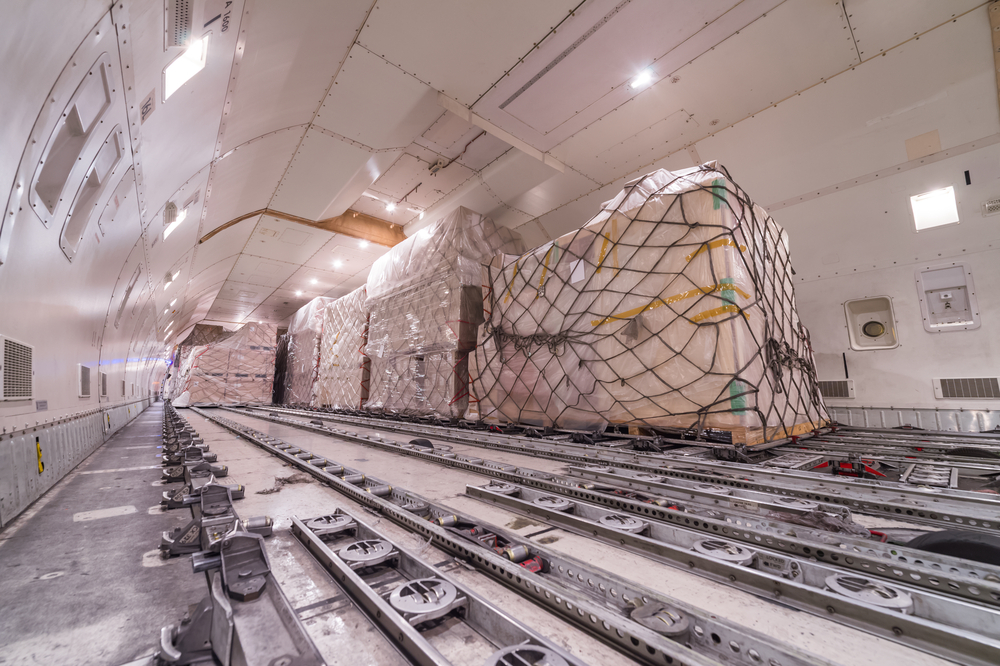Red Sea-related demand yet to materialise but enquiries rise
16 / 01 / 2024

Credit: tratong/ Shutterstock
The airfreight sector is yet to see any solid rise in demand related to the Red Sea crisis but customers are enquiring about alternatives to sea transport.
While there is an expectation that vessel diversions away from the Suez Canal route and around the Cape of Good Hope due to attacks on vessels will result in supply chain disruption, this is yet to materialise.
Dimerco Express Group special assistant to the chief executive Alvin Fuh told Air Cargo News that customers looking to move goods from Asia to the US east coast, which would traditionally operate through the Suez Canal, are at the moment switching to the US west coast and then using intermodal (IPI) or transloading services.
“Currently, we do see major shipment delays and customers in the US east coast prefer to go via US IPI service. However, we will expect more shipments to transload at the US west coast ports and truck to US east coast if rail congestion happens,” he said.
“Simultaneously, our customers are actively pursuing contingency plans, emphasising backup solutions such as sea/air via Dubai to Europe, railway transportation to Europe (with a preference to avoid the route through Russia for most US companies), and direct airfreight services into Europe,” he said.
“This heightened interest has led to a significant uptick in inquiries related to sea/air and railway services directed towards logistics service providers, but (which haven’t) yet materialised.”
Fuh pointed out that there was currently a lull in demand and as a result customers are being flexible and accepting longer transit times via the Cape of Good Hope.
“It is crucial to highlight that these inquiries presently revolve around logistics cost calculations as customers explore alternative solutions to fortify their supply chains,” he said.
He added: “Despite the availability of alternative modes such as railway, sea/air, and air freight, ocean freight remains the more economically viable choice.”
Looking ahead, Dimerco does not expect a particularly strong pre-Chinese New Year rush and consequently, there is minimal urgency for orders to shift to alternative modes.
“The prevailing trend suggests a preference for maintaining the status quo with ocean freight via the Cape of Good Hope,” he said.
“What we could predict is that if the demand does not grow before Chinese New Year, very probably, the factories in China will start the Chinese New Year holiday one week earlier and go back to work after 15th day of Chinese New Year which is February 26, which means the entire February will be extremely slow.
“In the long term, if the Red Sea situation is not solved, it might result in lowering the ocean freight schedule reliability for a couple of weeks, we will gradually see the change from ocean freight to sea/air and airfreight.
“Railway might still not be the first choice as an alternative solution to most US companies due to Russia-related concerns.”
Danish forwarder DSV also told Air Cargo News that it had yet to notice any increase in airfreight demand due to the Red Sea crisis, although the forwarder also reported a rise in enquiries about alternative solutions.
Meanwhile, Scan Global Logistics said that it expects a slow but steady increase in airfreight volumes amid predictions that the Red Sea conflict could last months, but demand had yet to materialise.
There is also no indication of a rise in demand according to the latest airfreight rate figures.
The overall Baltic Air Freight Index calculated by TAC Index slipped a further -3.1% in the week to January 15, leaving it lower over 12 months by 34.1% despite a rise in volumes post the Christmas to New Year holiday period.
Rates out of Hong Kong fell 3.5% week on week while out of Shanghai they were up by 0.6% despite volumes picking up after the Christmas holiday.
“Disruption to ocean shipping in the Red Sea has not yet led to any immediate surge in airfreight rates,” TAC said.
Gradual increase in airfreight expected as Red Sea crisis could last months













